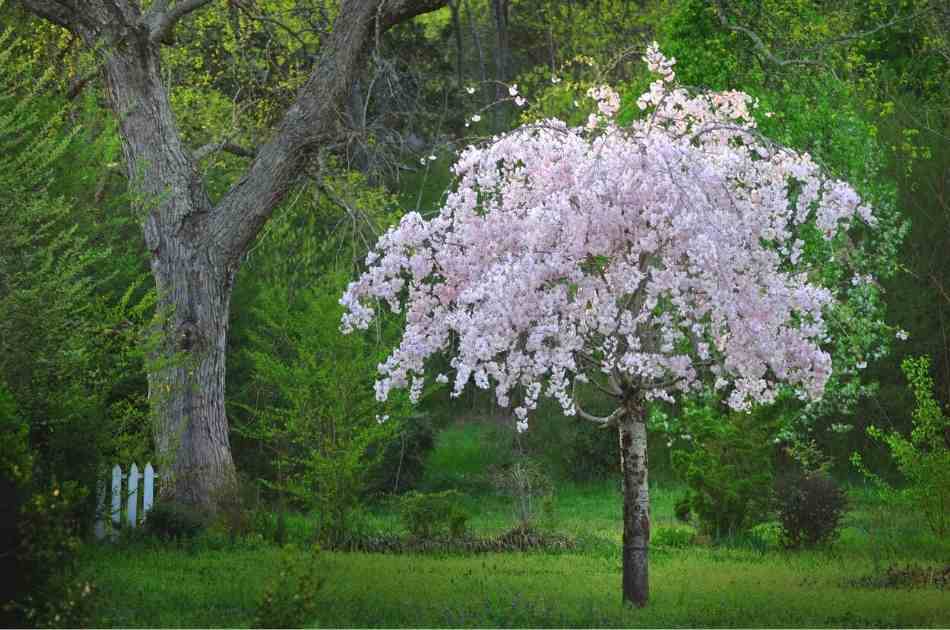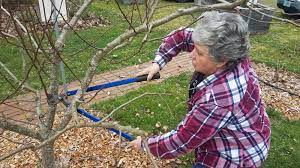Welcome to the heart of Liberty Township, where the beauty of our landscapes reflects the harmony between nature and community. In this guide, we’ll embark on a journey through the art of pruning, an essential skill for nurturing the health and allure of our trees and shrubs. Picture this: a vibrant array of flora, thriving under the careful hands of local enthusiasts. Beyond mere snips and cuts, pruning is an intricate dance with nature, promoting growth, preventing issues, and sculpting our surroundings. In this blog post, Liberty Heritage Nursery Farm helps to explore the nuanced world of tree and shrub care, cultivating a greener, more beautiful Liberty Township.
Understanding the Importance of Pruning

Nestled in the heart of Liberty Township, the landscaping services tell about the lush greenery natural beauty. However, to maintain this picturesque environment, the art of pruning plays a crucial role. Pruning isn’t just about aesthetics; it’s a vital aspect of tree and shrub care that ensures the health and longevity of our green companions. In this comprehensive guide, we’ll delve into the nuances of pruning, exploring the benefits, seasonal considerations, tools, techniques, and species-specific guidelines tailored to Liberty Township.
Pruning stands as a fundamental pillar in the realm of tree and shrub care, offering a multitude of benefits that extend far beyond mere aesthetic appeal. Firstly, pruning promotes the overall health and longevity of plants by eliminating dead or diseased branches, thwarting the spread of infections and preventing potential hazards. Additionally, this horticultural practice enhances air circulation and sunlight penetration, fostering optimal conditions for robust growth. By strategically removing specific branches, pruning directs energy to vital areas, promoting the development of strong, well-structured trees and shrubs.
Benefits of Pruning in Liberty Township
Liberty Township’s climate, characterized by distinct seasons, demands a thoughtful approach to tree and shrub care. Pruning, when executed with precision, offers a myriad of benefits tailored to our local environment. Beyond enhancing the visual appeal of our landscapes, proper pruning promotes air circulation, sunlight penetration, and soil nutrient distribution. It also mitigates the risk of disease and pest infestations, ensuring our trees and shrubs thrive in the face of seasonal challenges. Moreover, well-pruned vegetation contributes to the overall safety of our community by preventing the risk of falling branches during storms.
- Healthier Growth: Pruning stimulates robust, healthy growth by removing dead or diseased branches.
- Disease Prevention: Strategic pruning reduces the risk of diseases spreading among trees and shrubs.
- Enhanced Aesthetics: Shaping and pruning improve the overall appearance of the landscape, contributing to Liberty Township’s natural beauty.
- Improved Sunlight Exposure: Proper pruning allows sunlight to reach lower branches, promoting balanced growth throughout the plant.
- Storm Resilience: Well-pruned trees are more resistant to storm damage, ensuring the safety of the community.
- Increased Air Circulation: Thinning branches enhances air circulation, reducing the likelihood of fungal infections.
- Extended Lifespan: Regular pruning contributes to the longevity of trees and shrubs, preserving Liberty Township’s green heritage.
When to Prune in Liberty Township
Understanding the optimal times to prune is fundamental to successful tree and shrub care in Liberty Township. Spring is often the ideal season for general maintenance pruning, stimulating growth and ensuring a vibrant appearance. Summer pruning can be employed to control growth and shape trees, while fall is suitable for deadwood removal and preparing plants for winter. Winter pruning, when the trees are dormant, is strategic for structural adjustments and disease prevention. However, it’s imperative to adapt these general guidelines to the unique microclimate and weather patterns of Liberty Township, ensuring the best results for our local flora.
Pruning plays an indirect yet crucial role in maintaining effective drainage around trees and shrubs in Liberty Township. By removing dead or overcrowded branches, pruning helps prevent water retention, minimizing the risk of waterlogged soil and fostering proper drainage for the well-being of the plant roots.
Tools and Techniques for Pruning

Arming ourselves with the right tools and techniques is essential for mastering the art of pruning. Hand pruners, loppers, pruning saws, and pole pruners are indispensable tools for various pruning tasks. Understanding the purpose of each tool and using them correctly ensures clean cuts that promote rapid healing. Techniques such as thinning, heading back, and shaping should be applied judiciously, considering the specific needs of each tree or shrub. Thinning, for instance, allows for increased light penetration and air circulation, while heading back controls the size and shape of the vegetation. Shaping, on the other hand, is an art that combines horticultural knowledge with an aesthetic eye to craft visually pleasing forms.
- Pruning Tools: Utilize hand pruners, loppers, pruning saws, and pole pruners for specific tasks. Selecting the right pruning tools is crucial for effective tree and shrub care. Hand pruners are ideal for precision on smaller branches, while loppers provide extra leverage for thicker growth. Pruning saws are indispensable for larger limbs, and pole pruners offer reach for high branches. Regular maintenance and keeping tools sharp ensure clean cuts, promoting swift healing and overall plant health in Liberty Township.
- Clean Cuts: Ensure sharp, well-maintained tools for clean cuts that facilitate rapid healing. Clean cuts are essential in pruning, minimizing the risk of disease and promoting rapid healing for the plants in Liberty Township. Regularly sharpening and maintaining pruning tools ensures precision, reducing the likelihood of tearing or damaging the plant tissues and leaving a neat, healthy wound.
- Shaping: Artful shaping involves sculpting plants for aesthetic appeal while considering their natural form. Shaping involves an artistic approach to pruning, sculpting trees and shrubs to enhance their aesthetic appeal while respecting their natural form in Liberty Township. By thoughtfully trimming branches and guiding growth patterns, shaping not only creates visually pleasing landscapes but also harmonizes the greenery with the overall design of outdoor spaces in our community.
- Safety Measures: Prioritize safety with protective gear and proper ladder usage, especially for taller trees. Prioritizing safety measures during pruning activities is paramount in Liberty Township. Proper protective gear, including gloves and safety glasses, coupled with careful ladder usage, especially for taller trees, ensures the well-being of both the pruner and the surrounding community, reinforcing a commitment to responsible tree and shrub care.
Common Trees and Shrubs in Liberty Township: Pruning Guidelines

Liberty Township boasts a diverse array of trees and shrubs, each with its own unique characteristics. Understanding the specific needs of these species is paramount for effective pruning. For example, the iconic Ohio Buckeye (Aesculus glabra) benefits from selective pruning to maintain its distinctive form, while the Eastern Redbud (Cercis canadensis) responds well to rejuvenation pruning to enhance its flowering potential. Proper guidelines for popular species like the White Oak (Quercus alba), Sugar Maple (Acer saccharum), and Eastern Red Cedar (Juniperus virginiana) ensure that our pruning practices align with the natural tendencies of these plants, fostering robust growth and resilience.
Liberty Township boasts a diverse array of trees and shrubs, each contributing to the unique character of our landscapes. The iconic Ohio Buckeye, with its distinctive palmate leaves, benefits from selective pruning to maintain its graceful form. Eastern Redbuds, known for their vibrant pink blossoms, respond well to rejuvenation pruning, enhancing their flowering potential. Meanwhile, the White Oak, Sugar Maple, and Eastern Red Cedar, prominent in Liberty Township, demand specific pruning guidelines. Understanding the nuances of each species ensures that our pruning practices align with the natural tendencies of these plants, fostering robust growth and preserving the charm of our local flora.
Pruning Challenges in Liberty Township
While pruning is a fundamental practice, Liberty Township presents its own set of challenges. Unpredictable weather patterns, including heavy snowfall and occasional storms, can lead to damage that requires strategic pruning for recovery. Additionally, the presence of specific pests and diseases may necessitate tailored pruning approaches. Oak Wilt and Emerald Ash Borer are examples of threats that demand vigilant pruning to prevent their spread. By acknowledging and addressing these challenges, we can develop a proactive approach to pruning that fortifies our trees and shrubs against potential hazards.
Safety Measures
- Protective Gear: Prioritize safety with the use of gloves, safety glasses, and sturdy footwear during pruning activities.
- Proper Tool Usage: Ensure well-maintained and appropriate tools for the task at hand to minimize the risk of accidents.
- Secure Ladder Usage: When dealing with taller trees, use a secure ladder to reach higher branches safely.
- Professional Assistance: For challenging or high-risk pruning tasks, consider seeking the expertise of arborists or tree care professionals instead of doing by your ownself.
- Community Awareness: Promote awareness within the community about the importance of adhering to safety measures during tree and shrub care activities.
- Risk Mitigation: Be mindful of potential hazards, such as unstable branches or power lines, and take necessary precautions to mitigate risks during pruning.
Local Regulations and Permits
Respecting local regulations is paramount when engaging in tree and shrub care. Liberty Township may have specific guidelines regarding the pruning of certain species or the removal of large trees. It’s essential to be aware of any required permits before undertaking significant pruning projects. This not only ensures compliance with local laws but also fosters a community-wide commitment to responsible tree and shrub care. By aligning our pruning practices with local regulations, we contribute to the preservation of Liberty Township’s natural beauty for generations to come.
Consulting with Professionals
While the art of pruning is a skill that can be honed by homeowners and enthusiasts, there are instances where professional advice becomes invaluable. Arborists and tree care professionals possess a wealth of knowledge about local flora and the specific challenges faced in Liberty Township. Seeking their expertise for intricate pruning tasks or when dealing with large and mature trees ensures that our green assets receive the best care possible. Professional consultations can also offer insights into long-term planning for tree and shrub health, contributing to the sustained beauty of Liberty Township’s landscapes.
FAQs
What are the techniques for tree pruning?
The four most popular tree pruning methods for general pruning are crown thinning, crown raising, crown reduction and crown cleaning. You may notice that each pruning method involves the crown of the tree. That’s because the crown of the tree is essential for producing leaves for photosynthesis.
What are three tools used in pruning?
Secateurs, loppers and a folding pruning saw will enable you to tackle a wide range of jobs. Other useful tools are handy for specific pruning jobs, such as shears for clipping hedges or topiary, and long-reach pruners for high branches in trees.
What are structured pruning methods?
1.2 Structured pruning: Structured pruning focuses on pruning entire neurons, channels, or layers instead of individual weights. This approach can be more effective in reducing model size without sacrificing accuracy, as it removes entire components of the network that may be redundant.
What is the best tool for pruning trees?
For the cleanest cuts, choose bypass pruners, which cut like a pair of scissors, with a curved cutting blade that slides past a lower broad blade. Also called lopping shears, a lopper is the tool of choice for cutting branches 2 inches in diameter. The lopper label should specify the branch size it will cut.
What is global pruning?
Global vs. Local Pruning: Global pruning involves removing nodes/parameters across the entire model, while local pruning targets specific substructures (e.g., specific layers) within the model.
Conclusion
In concluding our exploration of “The Art of Pruning: Liberty Township Tree and Shrub Care,” we find that this horticultural practice is not merely a task but a commitment to nurturing the vitality of our local greenery. As we embrace the principles outlined in this guide, we forge a connection with nature, contributing to the enduring beauty of Liberty Township. Through thoughtful pruning, we shape not only the physical landscape but also a harmonious relationship between our community and the vibrant flora that graces our surroundings. Together, we cultivate a greener, healthier, and more visually captivating Liberty Township for generations to come.
